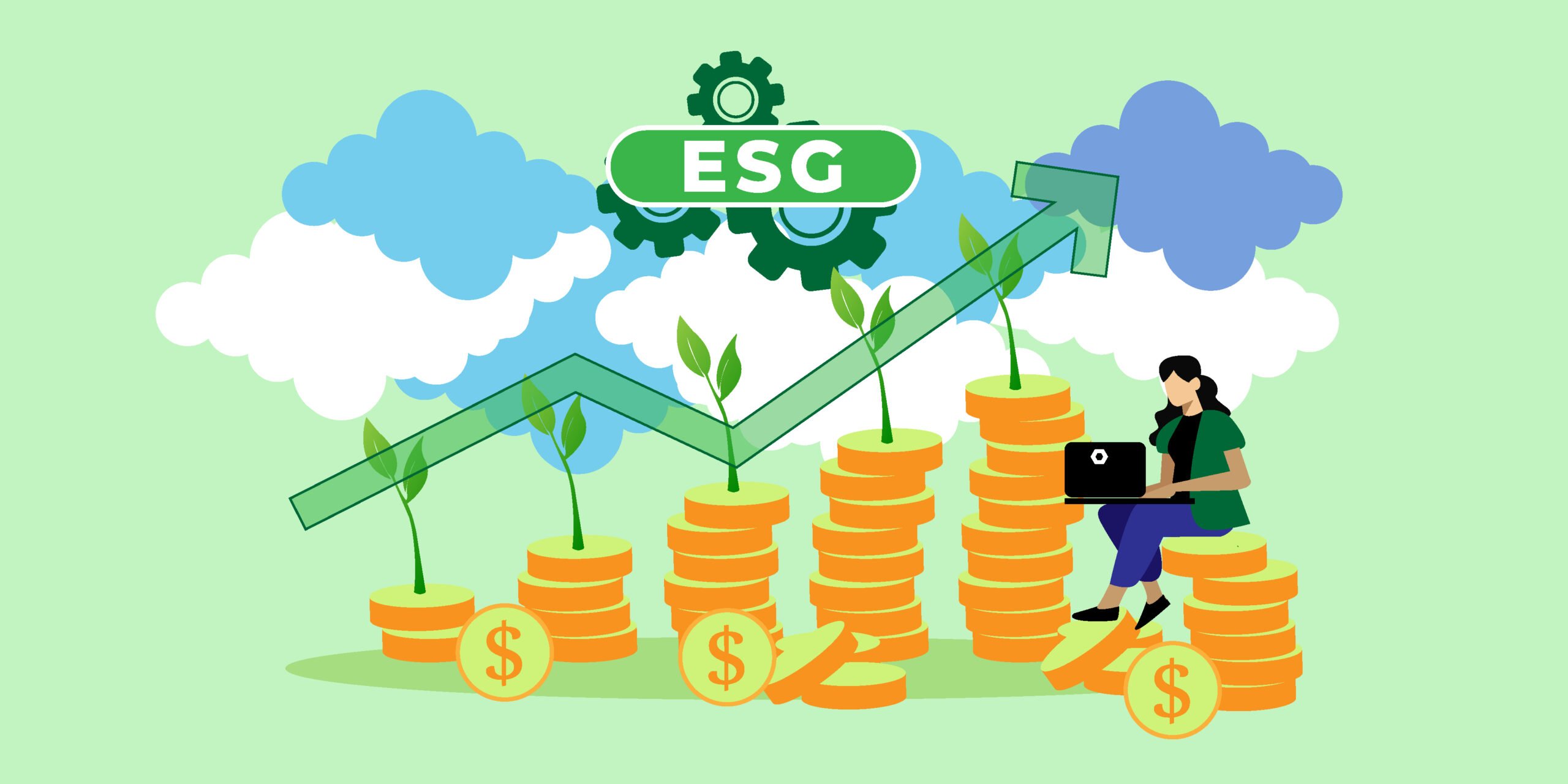
Amidst a rapidly changing global landscape, investors are increasingly recognizing the importance of aligning financial objectives with sustainability goals. Environmental, Social, and Governance (ESG) investing strategies have emerged as a powerful tool, enabling investors to navigate the complex intersection of profitability, societal impact, and long-term value creation.
In this article, we’ll embark on a comprehensive journey to unravel the intricacies of socially responsible investing and shed light on the diverse strategies that drive positive change.
Sustainable investing represents a paradigm shift, where financial performance is no longer evaluated in isolation from environmental and social implications. Instead, a proper ESG investment strategy acknowledges that companies’ environmental stewardship, social responsibility, and ethical governance practices significantly impact their long-term viability and resilience. By integrating ESG factors into investment decisions, investors and asset managers alike can embrace a broader perspective, and align their portfolios and mutual funds with sustainable trends, as well as foster positive societal outcomes.
Our exploration of ESG investments commences with a deep dive into the foundational pillars of socially responsible investing. We examine the environmental considerations, scrutinizing how companies manage their environmental risks and capitalize on opportunities associated with climate change, resource efficiency, waste management, and pollution mitigation. We then turn our attention to the social aspect, investigating how organizations handle workforce diversity, labor practices, community engagement, and other social impact indicators. Lastly, we delve into the realm of corporate governance, evaluating the integrity, transparency, and accountability of management teams and board structures.
We will also highlight several real-world ESG investing strategies that successful ESG funds are using to drive investment returns while remaining true to the ESG framework. Ranging from exclusionary screens and integration approaches to impact investing and shareholder engagement there are many different ways for investors to harness the power of the ESG criteria into their investment portfolios or ESG fund.
By examining the nuances, strengths, and limitations of each strategy, we aim to empower investors with the knowledge needed to construct portfolios that not only generate impressive financial returns but also contribute to a more equitable and resilient future.
What is ESG Investing?

Exploring ESG Investing: What Is ESG? | PLANSPONSOR
ESG investing, an acronym for Environmental, Social, and Governance investing, is an approach that integrates sustainability and ethical considerations into investment decisions. It goes beyond traditional financial analysis by evaluating companies based on their environmental impact, social responsibility, and governance practices. ESG investors seek to support businesses that demonstrate a commitment to positive environmental outcomes, ethical conduct, and long-term value creation.
More specifically, ESG investing can be broken down to three key pillars:
-
Environmental Considerations
Environmental factors encompass a range of issues, including climate change, resource depletion, pollution, and biodiversity. ESG investors assess a company’s environmental impact, resource efficiency, carbon emissions, and commitment to sustainable practices. They aim to identify companies that prioritize sustainability, develop eco-friendly solutions, and manage environmental risks effectively.
-
Social Factors
Social considerations focus on how a company interacts with and impacts its stakeholders, including employees, customers, communities, and suppliers. ESG investors evaluate labor practices, diversity and inclusion policies, human rights protection, customer relations, and community engagement. Companies that foster positive social outcomes and contribute to societal well-being are favored by ESG investors.
-
Governance Practices
Governance refers to the systems and processes that govern a company’s decision-making, accountability, and transparency. ESG investors analyze board composition, executive compensation, shareholder rights, anti-corruption measures, and ethical conduct. Companies with strong governance practices are viewed as more responsible and better equipped to manage risks, protect shareholder interests, and uphold ethical standards.
These 3 pillars act as the foundation to how investors and companies assess, analyze, and determine the effectiveness of various ESG strategies. These pillars are then translated into practical ways for investors to determine a company’s ESG efforts:
ESG Ratings and Rankings:
Various organizations provide ESG scores and rankings to evaluate various companies’ ESG performance. These assessments use predefined criteria to assess and compare companies based on their sustainability practices, environmental impact, social responsibility, and governance effectiveness. ESG ratings serve as a tool for investors to identify companies aligned with their values and sustainability goals.
Sustainability Reporting Frameworks:
Sustainability reporting frameworks, such as the Global Reporting Initiative (GRI) and the Sustainability Accounting Standards Board (SASB), provide guidelines for companies to disclose their ESG-related information. These frameworks promote transparency, consistency, and comparability in ESG reporting, enabling investors to access relevant data for informed decision-making.
Regulatory and Standardization Efforts:
Governments and regulatory bodies worldwide are increasingly recognizing the importance of ESG considerations. Efforts are being made to establish global standards and reporting requirements to enhance consistency, comparability, and reliability of ESG information. This standardization helps investors assess ESG factors more effectively and integrate them into their investment processes.
ESG investing represents a fundamental shift in investment practices, acknowledging the significance of sustainability and responsible business conduct. It aims to generate both financial returns and positive environmental and social outcomes. By incorporating ESG factors into investment decisions, investors can align their portfolios with their values, contribute to sustainable development, and encourage positive change in the corporate world.
Does ESG Investing Actually Lead to Better Returns?

ESG Investing: What it is & Why it’s Important | Modern Money
The relationship between ESG investing and financial returns has been a topic of significant interest and debate among investors and researchers. While opinions vary, several studies suggest a positive correlation between ESG integration and financial performance. One such example comes from a study completed by the University of North Carolina in 2022, which found that “companies with high ESG ratings can experience higher stock returns”. This study went to on to note that prioritizing ESG initiatives is not a guarantee of higher investment returns. However, organizations that implement sustainable practices are, at the minimum, just as effective as other firms at generating profits and revenue growth over an extended period of time.
ESG investing recognizes that certain environmental, social, and governance factors can have a material impact on a company’s financial performance over the long term. By incorporating ESG considerations, investors gain a more comprehensive view of a company’s risk profile, potential growth opportunities, and resilience.
As well, companies that effectively manage ESG risks are usually better equipped to navigate future challenges, such as regulatory changes, shifts in consumer preferences, or disruptions related to climate change. By investing in companies with strong ESG practices, investors can mitigate risks, enhance resilience, and potentially protect their portfolios from unforeseen events that could negatively impact financial returns.
While financial returns are a crucial aspect of investing, ESG investing goes beyond purely monetary considerations. It allows investors to align their investments with their values, contribute to positive societal and environmental outcomes, and drive sustainable change. ESG investing can also enhance reputation, attract socially conscious investors, and foster stakeholder trust, which can have benefits that are difficult to measure in a quantitative way for companies in the long run.
In summary, while the relationship between ESG investing and financial returns is not definitive for all cases, the growing body of evidence suggests that integrating ESG considerations into investment strategies can potentially lead to better risk-adjusted returns.
By identifying material ESG factors, mitigating risks, and aligning investments with sustainable practices, investors have the opportunity to generate both financial and non-financial value.
Most Effective ESG Investment Strategies
As sustainability and responsible investing gain prominence in the financial world, ESG investing has emerged as a powerful approach for aligning financial goals with ethical considerations.
From best-in-class selection to impact investing and active ownership, this section will uncover the diverse strategies that can help investors integrate ESG factors into their investment decisions and drive positive change while pursuing financial returns.
Best-in-Class Approach
The best-in-class strategy involves selecting companies within industries that demonstrate superior ESG performance compared to their peers. Investors identify leaders in environmental practices, social responsibility, and governance within each sector. This strategy seeks to allocate capital to companies that excel in ESG factors while maintaining exposure to diverse industries.
ESG Integration
ESG integration involves incorporating ESG factors into traditional financial analysis and investment decision-making processes. Investors evaluate a company’s financial health alongside its ESG performance, considering ESG risks and opportunities as part of the investment thesis. By integrating ESG considerations, investors aim to gain a holistic view of a company’s overall risk and return profile.
Thematic Investing
Thematic investing focuses on specific ESG-related themes or trends that are expected to drive sustainable growth. Examples include renewable energy, clean technology, sustainable agriculture, or social impact initiatives. Investors allocate capital to companies actively contributing to and benefiting from these themes, aiming to capitalize on the potential financial opportunities associated with sustainable development.
Impact Investing
Impact investing seeks to generate measurable social or environmental impact alongside financial returns. Investors proactively seek out companies, projects, or funds that align with specific sustainability goals, such as poverty reduction, clean water access, or climate change mitigation. Impact investors prioritize measurable outcomes and assess the positive change generated by their investments.
Engagement and Active Ownership
This strategy involves active shareholder engagement with companies to drive positive ESG change. Investors use their ownership rights to influence corporate behavior, encourage transparency, and promote sustainable practices. Through dialogues, voting on shareholder resolutions, and collaborative initiatives, investors seek to foster better ESG practices within companies and industries.
Exclusionary Screening
Exclusionary screening involves excluding companies or industries based on specific ESG criteria or controversial activities. Investors identify sectors such as tobacco, weapons, or fossil fuels and eliminate them from their investment universe. Exclusionary screening aligns investment portfolios with investors’ values and aims to avoid companies that do not meet certain ethical or sustainability standards.
It is important to note that the effectiveness of ESG investment strategies can vary based on an investor’s goals, risk tolerance, and time horizon. Combining multiple strategies or customizing approaches based on individual preferences can further enhance the effectiveness of ESG investing. Additionally, staying up-to-date with evolving ESG data, industry standards, and research findings is crucial to ensure the effectiveness and alignment of investment strategies with sustainability objectives.
Can you Combine ESG with Other Investing Strategies?

Can ESG disclosures reduce stock market shocks? | ESG Clarity
ESG investing has gained significant traction in recent years, and investors may wonder whether it can be effectively combined with other investment strategies.
The answer to this question is a resounding yes.
ESG factors can be integrated into various investment approaches, allowing investors to align their portfolios with sustainability goals while leveraging other strategies.
Passive index investing can incorporate ESG considerations through ESG-focused or screened index funds, ensuring that underlying securities adhere to specific ESG criteria.
Active investors can integrate ESG factors into fundamental analysis and stock selection, considering both financial and sustainability-related factors. Factor-based investing can include ESG as an additional factor, enabling investors to target specific factor exposures while considering sustainability.
Impact and thematic investing strategies can seamlessly integrate ESG, allowing investors to focus on investments that generate measurable positive impact or align with specific sustainability themes. ESG can also be incorporated into risk management and portfolio diversification strategies, helping investors manage non-financial risks and enhance long-term portfolio performance.
Conclusion

ESG investing has emerged as a powerful approach for investors seeking to align their financial goals with sustainability considerations. Throughout this article, we have explored the various facets of ESG investing, from understanding its principles to examining effective investment strategies.
We have learned that ESG investing goes beyond a mere ethical stance—it can potentially lead to better risk-adjusted returns by identifying material ESG factors, mitigating long-term risks, and enhancing a company’s resilience. Evidence suggests a positive correlation between ESG integration and financial performance, with companies demonstrating strong ESG profiles often outperforming their peers.
Furthermore, we’ve discovered that ESG can be effectively combined with other investment strategies, such as passive index investing, active stock selection, factor-based investing, and impact investing. Investors have the opportunity to integrate sustainability considerations into their portfolios while pursuing diverse investment objectives.
It’s crucial for investors to stay informed, perform their own research, and carefully assess the potential impact of ESG considerations on their investment decisions. The landscape of ESG investing continues to evolve, with new data, industry standards, and research emerging regularly. By remaining proactive and adaptive, investors can navigate this dynamic field and seize the opportunities presented by ESG investing.
As sustainability becomes increasingly vital in the global economy, ESG investing offers a pathway for investors to contribute positively to environmental and social causes while pursuing financial returns. By incorporating ESG principles into their investment strategies, investors have the potential to unlock sustainable growth, drive positive change, and shape a more responsible and resilient future.
